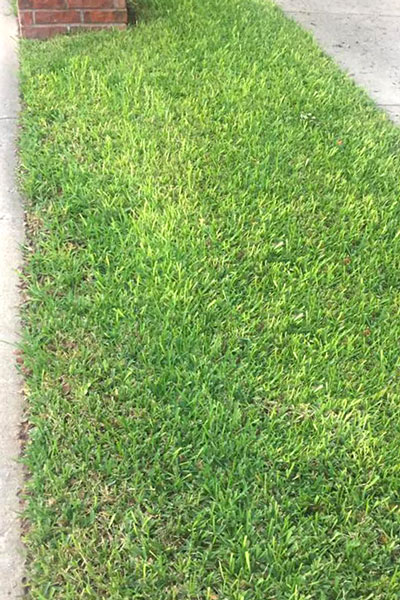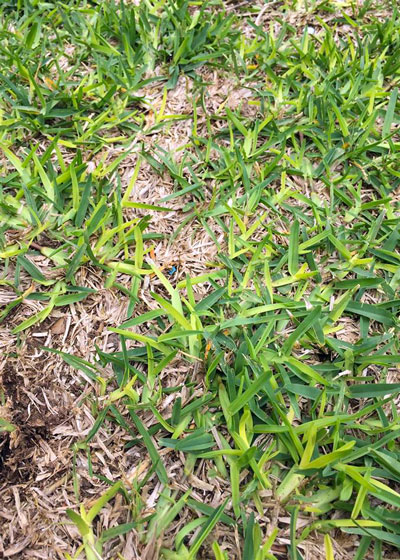May Update – Take All Root Rot
Take all root rot became a common topic among gardeners somewhere about 25 years ago. It plugged along for a while, but in the past 10 or 15 years, it has come to the forefront each spring. And it looks like that is really happening again in 2019.

If you Google “university take all root rot” you’ll find a lot of scholarly matches discussing this cool-season, soil-borne fungal disease that attacks grass roots of St. Augustine, bermuda and zoysia turf. If you pull on affected runners they will come loose from the soil easily. Their roots will be blackened and stubby.
The initial research conducted by my friend Dr. Phil Colbaugh of the Texas Agricultural Experiment Station of Texas A&M a few years before he retired found that applying a 1-inch layer of sphagnum peat moss would suppress the spread of the disease by lowering the pH at the soil surface. However, that was expensive and time-consuming, plus many of us worried about what that might do to the supply of peat if we continued on a long-term basis.

Even in his retirement Dr. Colbaugh has followed this disease. He called me in early March to say that the fungicide Azoxystrobin, sold under the consumer name of Scott’s Disease-EX and the professional brand of Heritage, seemed to perform very well at stopping the spread, not just slowing it.

Here are some quick thoughts and observations…
• On recent travels across the North Dallas and Collin County areas I observed hundreds of lawns showing very visible symptoms of take all root rot.
• I have had photos posted on my Facebook page almost daily asking what was wrong with their lawns (mostly St. Augustine) and what could be done to correct it. Almost all were TARR.
• Many of you are reporting good results using Azoxystrobin. Green up of affected turf can be dramatic and quick, especially now that warmer weather has brought good growing conditions.
• TARR is basically an April and May disease. Do not confuse it with mid-summer problems that will begin to appear once it turns hot. Chinch bugs and gray leaf spot will appear in St. Augustine anytime after mid-June. Their symptoms are entirely different. Learn to look closely so you don’t misidentify the problem and apply the wrong control.
• I did notice in one of the university articles that it’s best to collect clippings when TARR is a problem so that you’re not leaving a source for more infection. If you’re using a mulching mower you might want to keep that in mind.
Here are two university websites that might be of interest…
(Texas A&M, covers both St. Augustine and bermuda) https://agrilifeextension.tamu.edu/library/landscaping/take-all-root-rot/
(University of Arkansas, covers bermuda, St. Augustine and zoysia) https://www.uaex.edu/publications/pdf/FSA-7560.pdf
